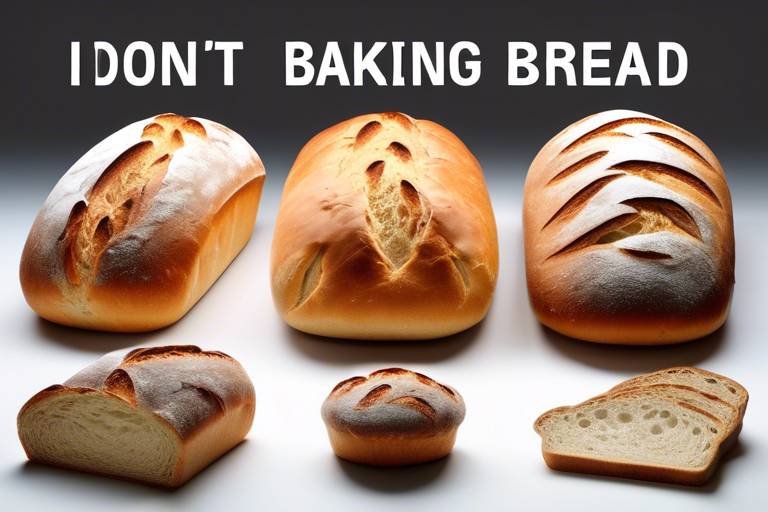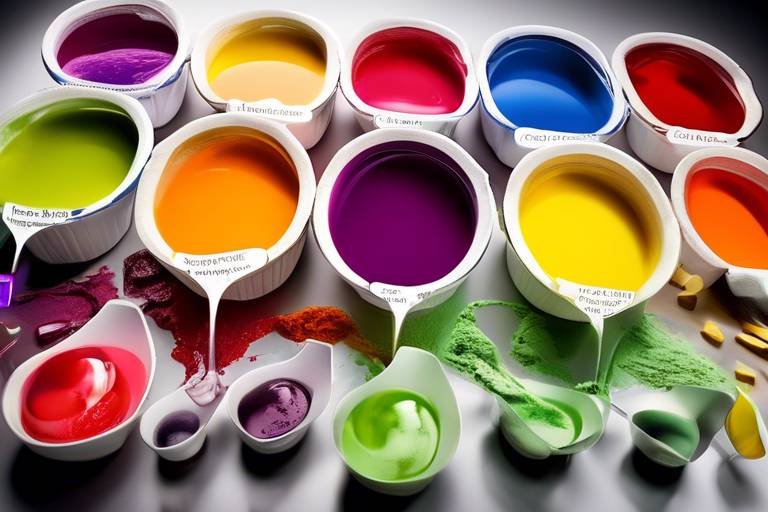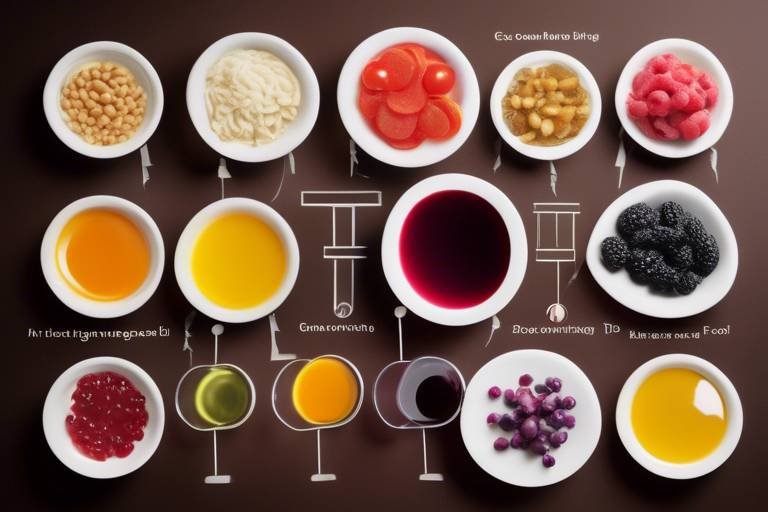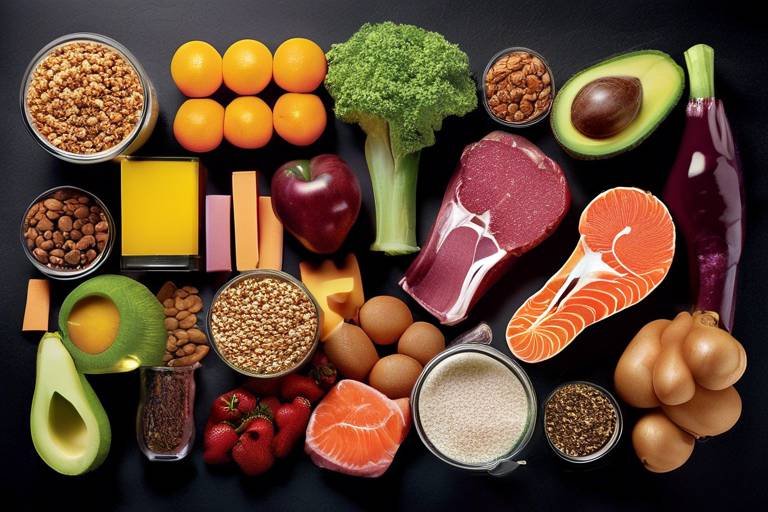The Chemistry of Cooking Meat - The Science Explained
Have you ever wondered why a perfectly cooked steak can make your mouth water while an overcooked piece of meat can leave you feeling disappointed? The answer lies in the fascinating world of chemistry that unfolds when meat is subjected to heat. Cooking meat is not just about following a recipe; it's a complex interplay of chemical reactions that transform the raw ingredients into a delicious meal. This article will take you on a journey through the science behind cooking meat, revealing how heat alters flavors, textures, and even nutritional properties.
At its core, meat is composed of proteins, fats, and water, each playing a crucial role in how it reacts to heat. Understanding this composition is essential for anyone who wants to master the art of cooking meat. For instance, proteins are long chains of amino acids that change structure when heated, leading to the development of new textures and flavors. Fats, on the other hand, melt and render during cooking, contributing to moisture and richness. Meanwhile, the water content in meat can evaporate, affecting juiciness and tenderness. By grasping these foundational concepts, you can better appreciate the culinary magic that occurs in your kitchen.
Now, let’s dive into the role of heat in cooking. Heat is the driving force behind all cooking processes, and it affects meat in various ways. Different cooking methods apply heat differently, leading to distinct textures and flavors. For example, when grilling, high direct heat creates a crispy exterior while keeping the inside juicy. Conversely, roasting uses indirect heat, allowing for even cooking and a rich flavor development. Understanding these methods can help you choose the best technique for your desired outcome.
To comprehend the chemistry of cooking meat, it's essential to know its composition, including proteins, fats, and water content, which all influence how meat reacts to heat. The proteins in meat, primarily collagen and myosin, play a significant role in determining its texture. When exposed to heat, collagen breaks down into gelatin, which adds a silky mouthfeel. Fats, particularly intramuscular fat, contribute to flavor and moisture; the more fat present, the juicier the meat. Water content is another critical factor, as it affects how the meat retains its juiciness during cooking.
Heat plays a crucial role in cooking meat, affecting its texture and flavor. When meat is cooked, the heat causes proteins to denature and coagulate, leading to changes in texture. The application of heat also promotes the Maillard reaction, which is responsible for the browning of meat and the development of complex flavors. Different cooking methods utilize heat in unique ways, impacting the cooking process and final taste of the meat.
Different cooking methods utilize conduction, convection, and radiation to transfer heat. Each method impacts the cooking process and final taste of the meat uniquely. Conduction involves direct contact with a hot surface, like a grill or pan, while convection uses hot air or liquid to transfer heat, as seen in roasting or boiling. Radiation, on the other hand, involves heat transfer through electromagnetic waves, such as in broiling or microwaving. Understanding these methods can help you achieve the perfect cook on your meat.
Grilling and roasting are popular methods that employ different heat transfer techniques, significantly affecting flavor development and texture of the meat. Grilling typically involves high, direct heat, creating a charred exterior that adds a smoky flavor. Roasting, in contrast, uses lower, indirect heat, allowing for even cooking and moisture retention. Both methods have their merits, and choosing between them depends on the desired outcome and the type of meat being cooked.
Slow cooking allows for gradual heat application, which enhances tenderness and flavor through prolonged collagen breakdown and moisture retention. This method is particularly beneficial for tougher cuts of meat, as the low temperature and extended cooking time transform them into tender, flavorful dishes. Additionally, slow cooking often allows for the infusion of spices and herbs, creating a depth of flavor that is hard to achieve with quicker cooking methods.
The internal temperature of meat is vital for achieving the desired doneness. Cooking meat to the right temperature ensures that it is safe to eat while also achieving the perfect texture. For instance, a medium-rare steak should reach an internal temperature of about 130-135°F (54-57°C), while chicken should be cooked to at least 165°F (74°C). Using a meat thermometer can help you monitor the temperature accurately, ensuring that your meat is cooked to perfection.
The Maillard reaction is a fundamental chemical reaction that occurs when meat is cooked, contributing to its browning and complex flavors. This reaction happens when amino acids and reducing sugars react under heat, creating hundreds of flavor compounds that enhance the taste of cooked meat. Understanding the Maillard reaction can elevate your cooking techniques, allowing you to create dishes with rich, savory flavors.
As meat cooks, the Maillard reaction generates a variety of flavor compounds, enhancing the overall taste experience. This is why searing meat before slow cooking can lead to a more flavorful final dish. The range of flavors produced during the Maillard reaction can turn an ordinary meal into something extraordinary, making it essential for any home cook to grasp this concept.
The Maillard reaction also influences the color of cooked meat. As meat cooks, it transitions from a dull red to a rich brown, which not only indicates doneness but also appeals to the senses. The visual aspect of cooking is crucial; a well-browned piece of meat is often more appetizing than its pale counterpart. Understanding these color changes can help you gauge the cooking process and achieve the desired results.
Marinades and seasonings play a significant role in the chemistry of meat cooking, affecting flavor, tenderness, and moisture retention. By incorporating various ingredients, you can enhance the natural flavors of the meat while also tenderizing it. Marinades typically contain acidic components like vinegar or citrus juice, which help break down proteins, making the meat more tender and flavorful.
Acidic marinades can help tenderize meat by breaking down proteins. Ingredients like lemon juice, yogurt, or wine can penetrate the meat, enhancing its texture and flavor profile. However, it’s essential to balance the acidity; too long in an acidic marinade can lead to mushy meat, so timing is crucial.
Different methods of applying marinades and seasonings can lead to varied flavor profiles. Techniques like brining, dry rubbing, or injecting marinades can significantly impact the final taste of the meat. For example, brining infuses moisture and flavor, while dry rubbing creates a flavorful crust during cooking. Experimenting with these techniques can help you discover unique flavor combinations that elevate your dishes.
- What is the best cooking method for tenderizing meat? Slow cooking is often the best method for tenderizing tougher cuts of meat.
- How can I tell if my meat is cooked properly? Using a meat thermometer is the most reliable way to ensure your meat is cooked to the desired doneness.
- Why is the Maillard reaction important? The Maillard reaction is crucial for developing complex flavors and appealing colors in cooked meat.
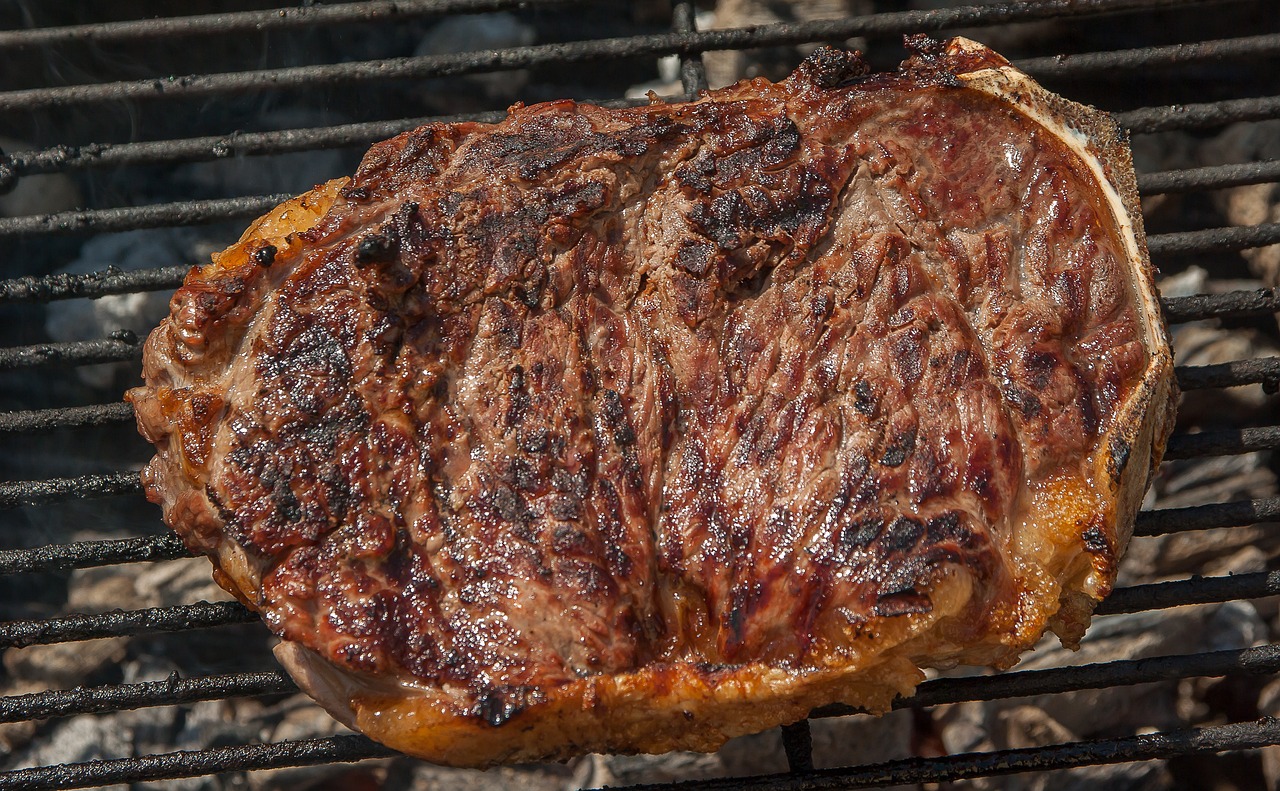
Understanding Meat Composition
To truly grasp the chemistry of cooking meat, we first need to dive into its fundamental building blocks. Meat is a complex mixture of proteins, fats, and water, each playing a crucial role in how it cooks and tastes. Understanding these components not only helps you appreciate the culinary art but also empowers you to make informed choices in the kitchen.
The primary component of meat is protein, which contributes to its structure and texture. When heat is applied during cooking, these proteins undergo a process called denaturation, where they unravel and then coagulate, creating a firmer texture. This transformation is what gives cooked meat its characteristic chewiness and mouthfeel. However, the type of protein varies across different cuts of meat, affecting how they react to heat. For instance, muscle fibers in tougher cuts, such as brisket, contain more connective tissue, which requires longer cooking times to break down.
Next up, we have fat, which is often underestimated in its importance. Fat not only adds flavor but also moisture, making meat succulent and rich. There are two types of fat found in meat: intramuscular fat (or marbling) and subcutaneous fat. Marbling, which is the fat interspersed within the muscle, melts during cooking, imparting flavor and juiciness to the meat. On the other hand, subcutaneous fat, found just beneath the skin, can create a barrier that helps retain moisture during cooking, especially in methods like roasting.
Water content is another critical factor in meat composition. Fresh meat typically contains about 75% water, which plays a significant role in the cooking process. When heat is applied, this water begins to evaporate, concentrating flavors and affecting the texture. If meat is cooked too quickly or at too high a temperature, it can lose too much water, resulting in a dry and tough final product. This is why techniques that allow for gradual cooking, such as braising or slow roasting, are often preferred for tougher cuts.
To summarize, the composition of meat can be broken down into the following key components:
- Proteins: Essential for structure and texture; denature and coagulate upon heating.
- Fats: Provide flavor and moisture; include intramuscular and subcutaneous types.
- Water: Affects juiciness and flavor concentration; must be managed carefully during cooking.
Understanding these components not only enhances your cooking skills but also allows you to experiment with various techniques and flavors. Next time you prepare a meal, consider how the composition of the meat will influence the outcome, and use that knowledge to your advantage!
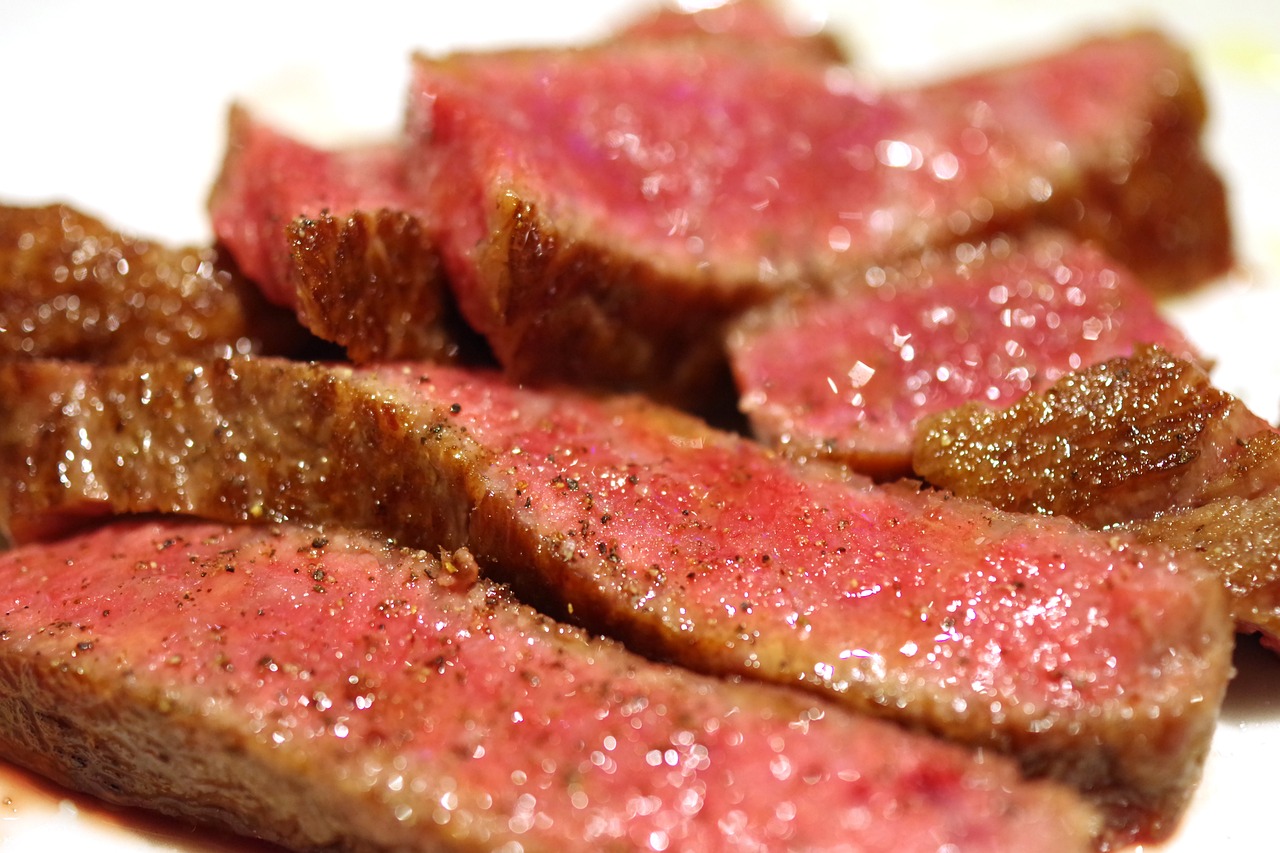
The Role of Heat in Cooking
When it comes to cooking meat, heat is the unsung hero. It’s the magical force that transforms a raw slab of flesh into a mouthwatering meal. But how does this transformation happen? Well, it’s all about the way heat interacts with the meat’s proteins, fats, and water content. As you apply heat, you’re not just cooking; you’re engaging in a fascinating chemical dance that affects texture, flavor, and even nutritional properties.
Different cooking methods apply heat in unique ways, which can dramatically alter the final result. For instance, when grilling, the direct heat sears the surface of the meat, creating a caramelized crust that not only enhances flavor but also locks in juices. On the other hand, roasting uses indirect heat, allowing the meat to cook evenly while developing a rich, deep flavor profile. This contrast highlights how the method of heat application can lead to very different culinary outcomes.
Understanding the three primary methods of heat transfer is essential for mastering the art of cooking meat. Conduction occurs when heat is transferred directly from one surface to another, such as when meat touches a hot grill or pan. This method is great for achieving a nice sear but can lead to uneven cooking if not monitored closely.
Convection, on the other hand, involves the movement of hot air or liquid around the meat. Think of a convection oven, where hot air circulates, cooking the meat evenly. This method is particularly beneficial for larger cuts, as it ensures that the heat penetrates thoroughly without drying out the exterior.
Finally, there’s radiation, which is how heat is transferred through waves, like the sun warming your skin. This method is often seen in cooking techniques like broiling or using a microwave. Each method has its strengths and weaknesses, and knowing when to use each one can elevate your cooking game.
Let’s take a closer look at two popular cooking methods: grilling and roasting. Grilling is all about high heat and quick cooking times. The intense heat from below creates a beautiful char on the outside while keeping the inside juicy. This method is perfect for cuts like steaks and burgers, where you want that smoky flavor and crispy texture.
Roasting, however, is a slower process that allows for even cooking. When you roast meat, you’re not just cooking it; you’re also allowing the flavors to develop over time. The Maillard reaction kicks in, creating those delightful browning effects that we all love. Plus, roasting is fantastic for larger cuts, like whole chickens or roasts, where you want a tender interior with a crispy exterior.
Now, let’s not forget about the wonders of slow cooking. This method is a game-changer for achieving ultimate tenderness and flavor. By applying low heat over an extended period, slow cooking allows collagen in tougher cuts to break down, resulting in a melt-in-your-mouth experience. It’s like giving your meat a warm hug!
Moreover, slow cooking retains moisture, preventing the meat from drying out. Whether you’re using a slow cooker or a Dutch oven, this method is perfect for stews, braises, and other hearty dishes that benefit from the deep, rich flavors developed over time.
In conclusion, understanding the role of heat in cooking meat is crucial for any aspiring chef. By mastering different cooking methods and their effects on meat, you can unlock a world of flavors and textures that will elevate your culinary creations. So next time you fire up the grill or preheat the oven, remember that you’re not just cooking—you’re engaging in a beautiful science of transformation!
- What is the best cooking method for steak? Grilling is often considered the best method for steak, as it allows for a perfect sear and retains juiciness.
- How does slow cooking change the texture of meat? Slow cooking breaks down collagen, making tougher cuts more tender and flavorful.
- What temperature should meat be cooked to for safety? Different meats have different safe cooking temperatures; for example, poultry should reach 165°F (74°C).
- Can I use different marinades for different meats? Absolutely! Different meats benefit from different marinades, depending on their flavor profiles and textures.
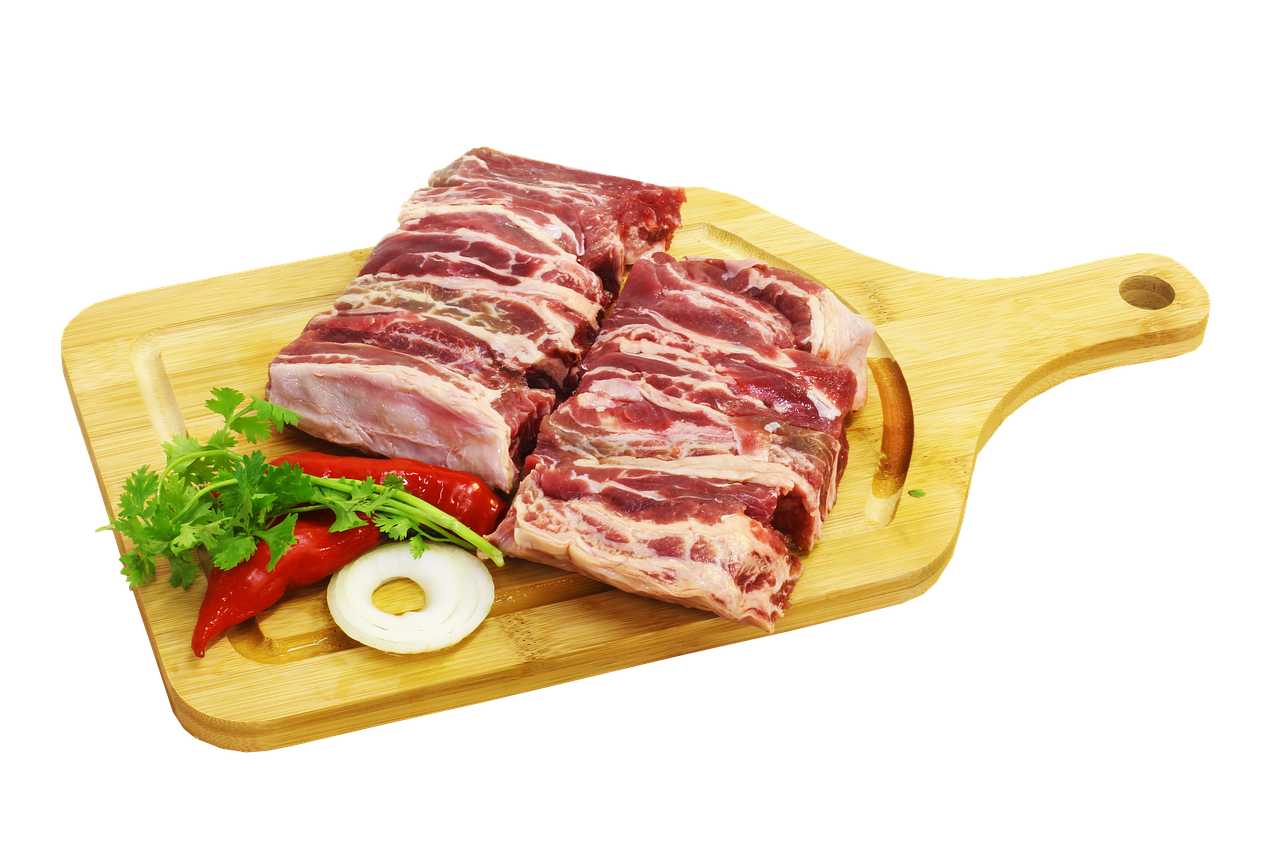
Conduction, Convection, and Radiation
When it comes to cooking meat, understanding the different methods of heat transfer is like having a secret weapon in your culinary arsenal. The three primary methods are conduction, convection, and radiation. Each of these processes plays a crucial role in how your meat turns out, affecting everything from texture to flavor. So, let’s dive into each method and uncover the magic behind them!
Conduction is the direct transfer of heat from one substance to another through direct contact. Think of it as the handshake of cooking; when you place a steak on a hot grill, the heat from the grill grates transfers directly to the meat. This method is especially effective for searing, creating that delicious crust that everyone loves. The key here is that the heat travels from the hotter object (the grill) to the cooler object (the meat), and the speed of this transfer can significantly influence the final outcome. If you don’t get that sear just right, you might end up with a steak that’s beautifully cooked on the inside but lacking that coveted exterior crunch.
Convection, on the other hand, involves the movement of heat through liquids or gases. When you cook meat in a pot of simmering water or a convection oven, the hot liquid or air circulates around the meat, cooking it evenly. This method is fantastic for dishes like stews or braises, where you want the flavors to meld beautifully over time. The movement of the hot liquid or air not only cooks the meat but also helps retain moisture, ensuring that your dish remains juicy and flavorful. It’s like giving your meat a warm hug, wrapping it in a cozy blanket of heat!
Lastly, we have radiation, which is the transfer of heat through electromagnetic waves. This is the magic behind your microwave and broiler. When you use a microwave, it sends out waves that excite the water molecules in the meat, causing them to heat up quickly. This method is super fast, but it can sometimes lead to uneven cooking if you’re not careful. On the flip side, when using a broiler, the direct heat from above can create a beautiful char on the surface of your meat while keeping the inside tender and juicy.
To summarize the differences in these cooking methods, here’s a quick table:
| Method | Heat Transfer | Best Use |
|---|---|---|
| Conduction | Direct contact | Searing, frying |
| Convection | Circulation of heat | Stewing, roasting |
| Radiation | Electromagnetic waves | Microwaving, broiling |
Understanding these three methods of heat transfer can help you become a more versatile cook. By knowing when to use conduction, convection, or radiation, you can master the art of cooking meat to perfection. So the next time you fire up the grill or pop a roast in the oven, remember the science behind it and let it guide your culinary journey!
- What is the best cooking method for tenderizing meat?
Slow cooking methods like braising and stewing are excellent for tenderizing tougher cuts of meat, as they allow collagen to break down over time.
- How can I ensure even cooking?
Using convection methods, such as roasting in an oven, can help achieve even cooking by circulating hot air around the meat.
- Does the cooking method affect flavor?
Absolutely! Different methods, like grilling or broiling, can enhance flavors through caramelization and the Maillard reaction, while slow cooking can deepen flavors.
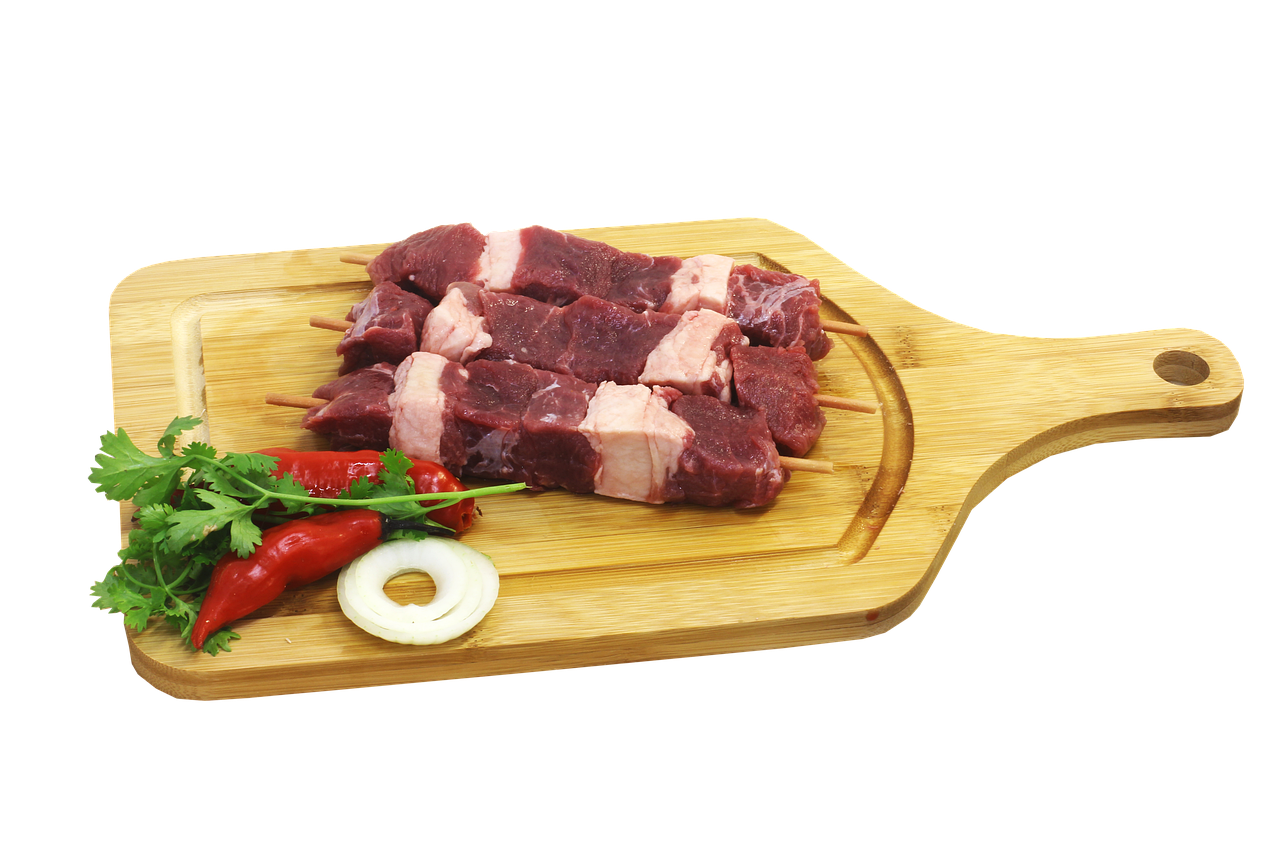
Grilling vs. Roasting
When it comes to cooking meat, two of the most popular methods are grilling and roasting. Both techniques have their unique charm and flavor profiles, but they operate on different principles of heat transfer, which significantly affects the final taste and texture of the meat. Grilling is a high-heat cooking method that involves direct exposure to flames or hot surfaces, while roasting uses indirect heat in an oven, allowing for a more gradual cooking process.
Grilling often results in a deliciously charred exterior, thanks to the intense heat. This process not only adds a smoky flavor but also creates those beautiful grill marks that we all love. The high temperatures can quickly sear the surface of the meat, locking in juices and enhancing the overall flavor through the Maillard reaction. On the other hand, roasting provides a more even cook, allowing the meat to heat through thoroughly. This method is particularly effective for larger cuts, such as whole chickens or roasts, where you want a tender interior without overcooking the outside.
Here’s a quick comparison of the two methods:
| Aspect | Grilling | Roasting |
|---|---|---|
| Heat Source | Direct heat from below | Indirect heat from all sides |
| Cooking Time | Quick (minutes) | Longer (hours) |
| Best for | Steaks, burgers, vegetables | Whole meats, casseroles |
| Flavor Profile | Smoky, charred | Rich, savory |
Both methods can create mouthwatering results, but the choice often comes down to personal preference and the type of meat being cooked. For instance, grilling is perfect for quick meals and impromptu gatherings, while roasting shines in a more leisurely cooking environment, allowing flavors to develop over time. Additionally, roasting can be enhanced with the use of herbs and spices, which infuse the meat with aromatic flavors as it cooks slowly in the oven.
In summary, whether you choose to grill or roast, understanding the differences in heat application can help you achieve the best results for your meat dishes. Each method has its unique advantages, and experimenting with both can lead to delightful culinary discoveries. So, why not fire up that grill or preheat your oven and see what delicious creations you can come up with?
- Can I grill meat that is usually roasted? Yes! Many cuts of meat can be grilled, but be mindful of cooking times and temperatures to ensure they’re cooked through.
- Which method is healthier? Both grilling and roasting can be healthy cooking methods, but grilling often allows excess fat to drip away from the meat.
- How do I know when my meat is done? Using a meat thermometer is the best way to check doneness. Each type of meat has a recommended internal temperature for safety and optimal flavor.
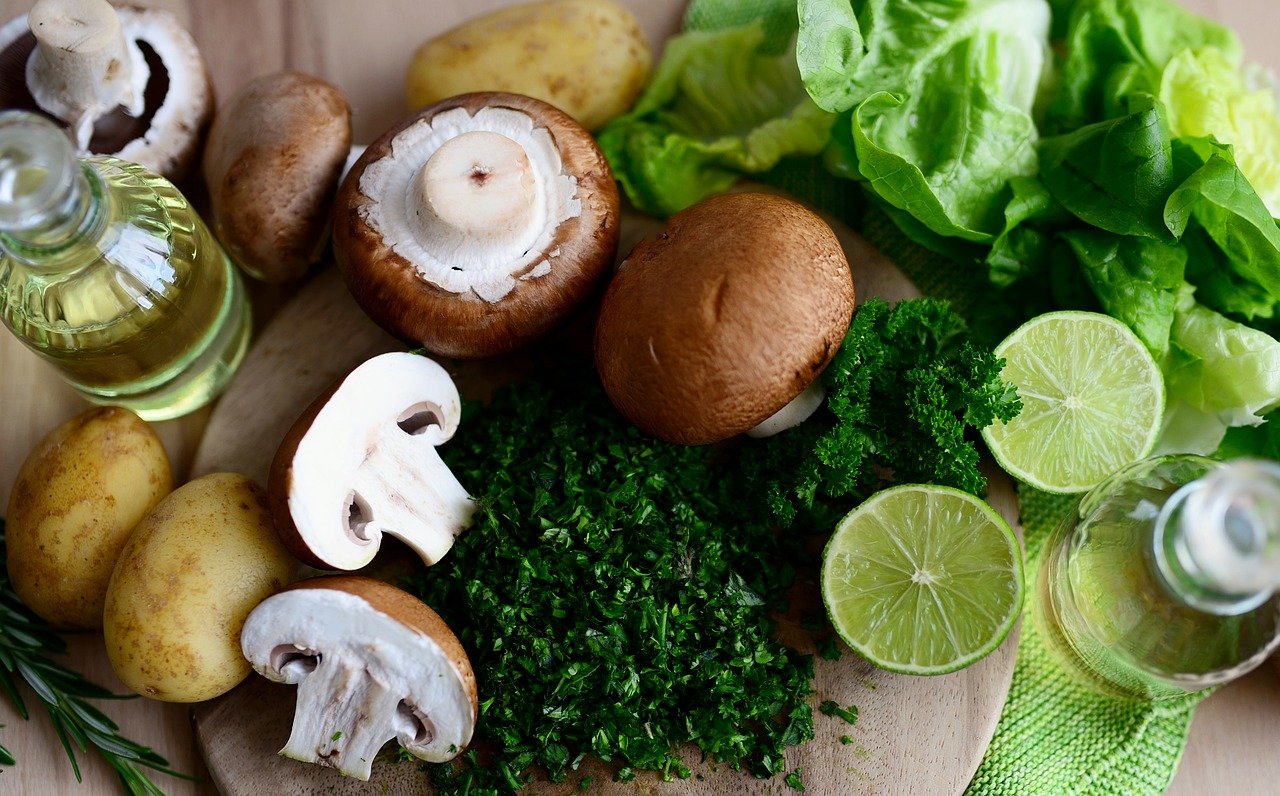
Slow Cooking Benefits
When it comes to cooking meat, slow cooking is like the gentle hug your favorite blanket gives you on a chilly night. This method allows flavors to meld together beautifully while ensuring that the meat becomes incredibly tender. But what exactly makes slow cooking so beneficial? For starters, it involves applying low and consistent heat over an extended period, which promotes the breakdown of tough connective tissues, particularly collagen. As this collagen breaks down, it transforms into gelatin, which not only enhances the meat's tenderness but also contributes to a rich, luscious mouthfeel that you simply can’t achieve with quicker cooking methods.
Moreover, slow cooking is a fantastic way to retain moisture. By cooking meat in a covered pot or slow cooker, you create a sealed environment that traps steam and moisture, preventing the meat from drying out. This is especially important for lean cuts that can easily become tough and chewy if cooked too quickly. In a way, slow cooking is like nurturing your meat; it allows it to relax and absorb flavors from any seasonings or marinades you’ve added. The result? A dish that’s bursting with flavor and has a melt-in-your-mouth texture.
Additionally, slow cooking is incredibly convenient. Imagine coming home after a long day to the tantalizing aroma of a hearty stew or braised meat wafting through your home. With slow cooking, you can prep your ingredients in the morning, set your cooker, and let it do the work while you go about your day. It’s a win-win situation; you get to enjoy delicious, home-cooked meals without spending hours in the kitchen. Plus, there’s something magical about the way flavors develop over time. The longer the meat cooks, the more pronounced the flavors become, creating a symphony of taste that’s hard to replicate with quicker methods.
To sum it up, the benefits of slow cooking are numerous:
- Tenderness: Breaks down tough fibers for a softer texture.
- Moisture Retention: Keeps meat juicy and flavorful.
- Convenience: Set it and forget it; perfect for busy lifestyles.
- Flavor Development: Allows ingredients to meld beautifully over time.
So, the next time you're contemplating how to cook that beautiful cut of meat, consider the slow cooking method. Not only will you create a dish that’s both satisfying and delicious, but you’ll also enjoy the process of cooking in a way that’s relaxed and uncomplicated.
1. What types of meat are best for slow cooking?
Slow cooking works well with tougher cuts of meat, such as chuck roast, brisket, pork shoulder, and lamb shanks. These cuts benefit from the long cooking time that breaks down connective tissues.
2. Can I use frozen meat in a slow cooker?
It's generally recommended to thaw meat before placing it in a slow cooker to ensure even cooking. Cooking frozen meat can lead to uneven temperatures, which may not be safe.
3. How long should I cook meat in a slow cooker?
Cooking times can vary based on the type of meat and the setting of your slow cooker. Generally, you can cook meat on low for 6-8 hours or on high for 3-4 hours.
4. Can I add vegetables to my slow cooker?
Absolutely! Just keep in mind that root vegetables like carrots and potatoes take longer to cook, so it's best to place them at the bottom of the cooker and add meat on top.
5. Is it safe to leave a slow cooker on while I'm out?
Yes, slow cookers are designed to be left unattended. Just ensure you follow the manufacturer's guidelines and use it on a stable surface.
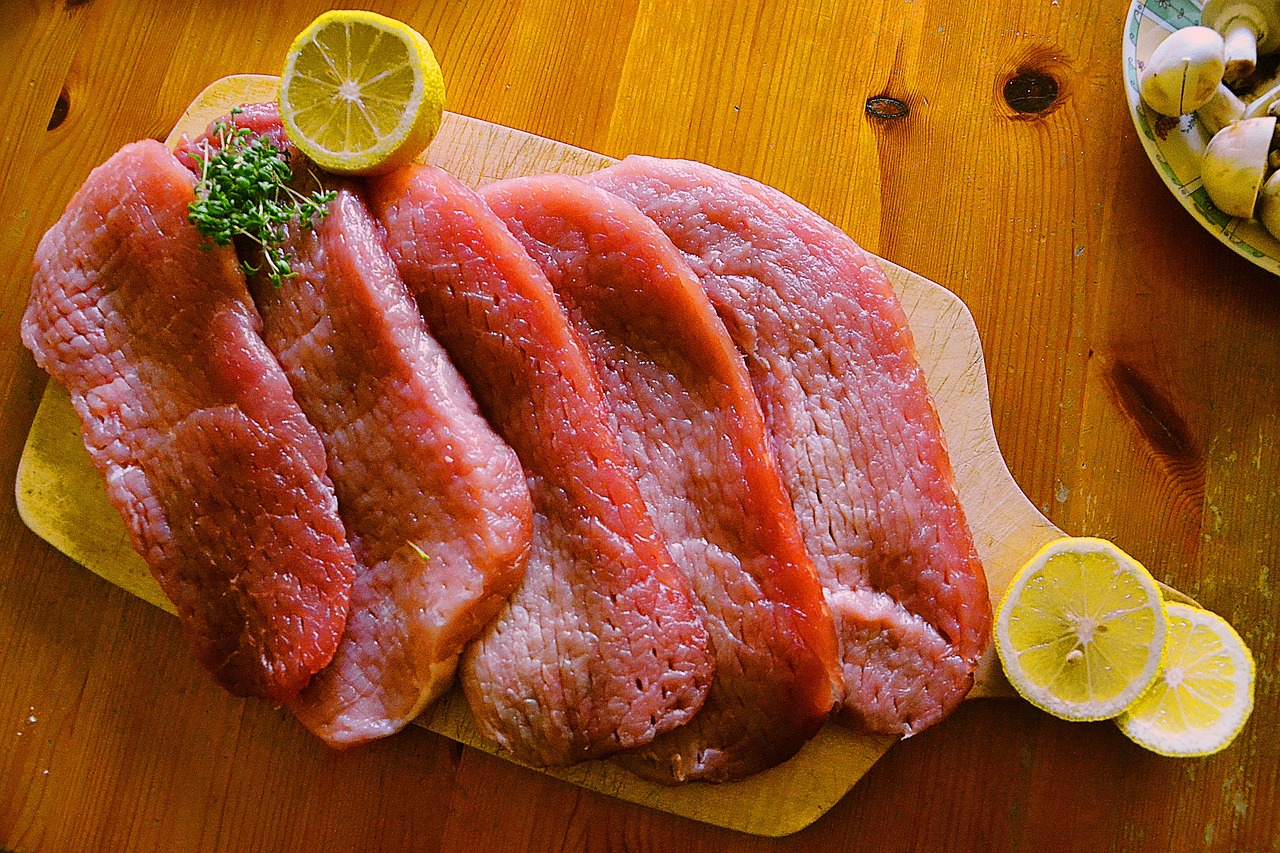
Temperature and Doneness
When it comes to cooking meat, understanding internal temperature is absolutely crucial for achieving the desired doneness. Have you ever bitten into a steak that was overcooked and dry, or worse, undercooked and unappetizing? That's where temperature control comes into play! Different types of meat require specific temperatures to ensure they're not only safe to eat but also delicious and juicy.
For example, the USDA recommends the following internal temperatures for various meats:
| Type of Meat | Recommended Internal Temperature (°F) |
|---|---|
| Beef, Pork, Lamb (steaks, roasts, chops) | 145°F |
| Ground Meats (beef, pork, lamb) | 160°F |
| Poultry (chicken, turkey) | 165°F |
| Fish | 145°F |
These temperatures are not just numbers; they represent a transformation that occurs within the meat. As the temperature rises, proteins begin to denature, and fat melts, creating a more tender and flavorful bite. Imagine cooking a steak: as it heats up, the muscle fibers relax and the fats render, resulting in a succulent piece of meat that practically melts in your mouth. Conversely, if you cook it too long, those fibers tighten up, and the moisture evaporates, leading to a dry disappointment.
So how do we ensure we hit that sweet spot? Using a meat thermometer is the best way to monitor the internal temperature. Insert it into the thickest part of the meat, away from any bone, for the most accurate reading. Remember, carryover cooking can also affect your meat's temperature after you remove it from the heat source, so it's wise to take it off a few degrees before it reaches your target temperature.
In addition to the temperature, the resting period is equally important. Allowing meat to rest after cooking lets the juices redistribute throughout the meat, ensuring that every bite is as tender and flavorful as possible. For instance, a steak should rest for about 5 to 10 minutes, while larger cuts like roasts may need up to 20 minutes. Think of it as letting the meat catch its breath after the intense heat of cooking!
In summary, achieving the perfect doneness is a delicate balance of time, temperature, and technique. By paying close attention to the internal temperature and allowing for proper resting, you can elevate your meat cooking game to new heights. So next time you're in the kitchen, remember: it's not just about cooking; it's about understanding the science behind it!
- What is the best way to check the doneness of meat? Using a meat thermometer is the most reliable method to ensure your meat is cooked to the desired temperature.
- Why is resting meat important? Resting allows the juices to redistribute, leading to a more tender and flavorful piece of meat.
- Can I use visual cues to determine doneness? While visual cues can help, they are not as reliable as using a thermometer, especially for larger cuts of meat.
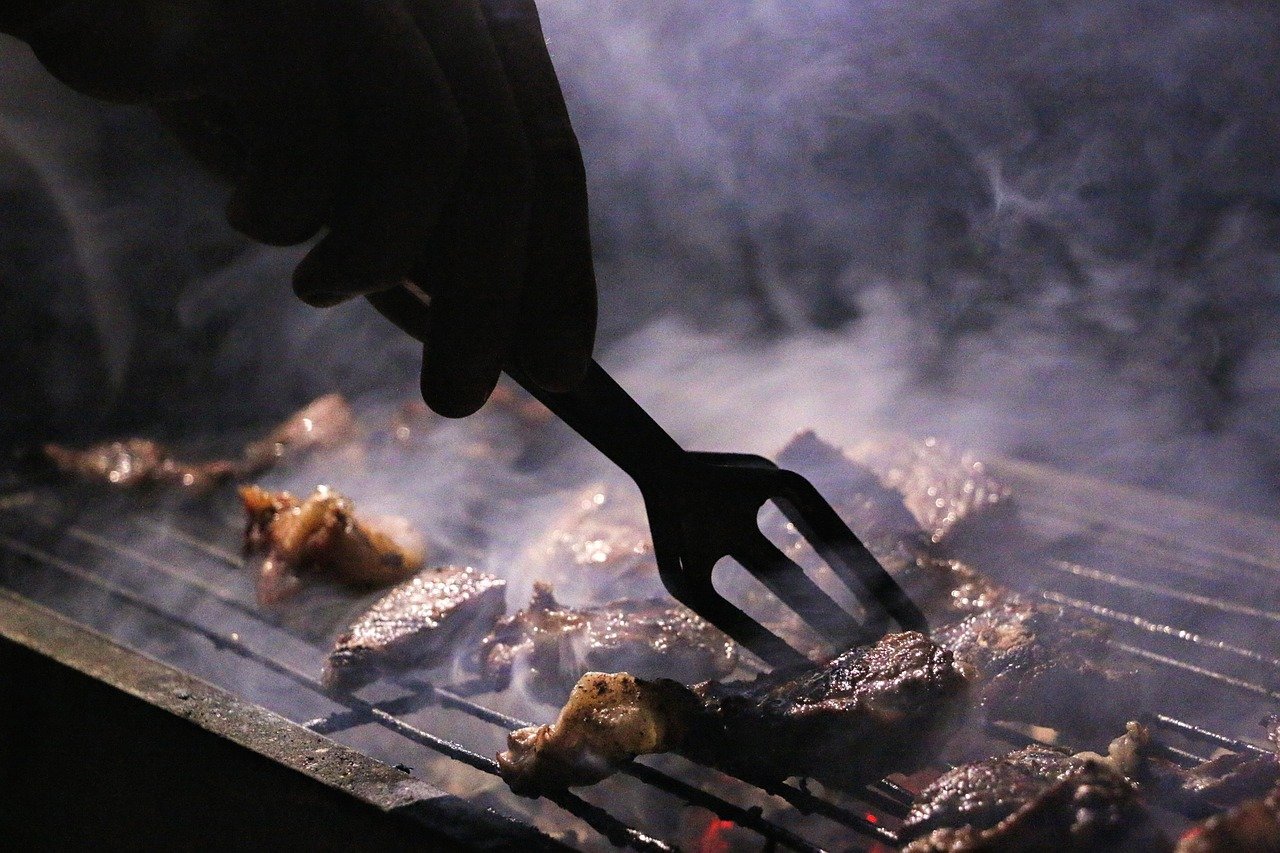
Maillard Reaction Explained
The Maillard reaction is one of the most fascinating and complex chemical reactions that occurs when cooking meat, and it’s a game-changer when it comes to flavor and texture. This reaction happens between amino acids and reducing sugars when meat is subjected to heat, resulting in a myriad of flavors and aromas that we associate with perfectly cooked meat. Imagine biting into a juicy steak and tasting that rich, savory flavor—thank the Maillard reaction for that!
When heat is applied, the Maillard reaction kicks off a series of reactions that create new compounds, which are responsible for the deliciously brown crust on meats. This browning not only enhances the visual appeal of the dish but also contributes to the overall flavor profile. In fact, the Maillard reaction is so significant that it can be broken down into several stages, each contributing distinct flavors and colors to the meat.
Here’s how it works: As meat cooks, the temperature rises, and the moisture begins to evaporate, allowing the surface to reach a temperature where the Maillard reaction can occur, typically around 300°F (150°C). The sugars and amino acids react in a complex series of steps, ultimately leading to the formation of hundreds of different flavor compounds. This is why you might notice that grilled or roasted meats have a much richer taste compared to boiled or steamed meats.
To give you a clearer understanding, here’s a breakdown of the key stages of the Maillard reaction:
| Stage | Description |
|---|---|
| Initial Reaction | When heat is applied, reducing sugars and amino acids begin to react, forming glycosylamine. |
| Intermediate Compounds | These glycosylamines undergo further reactions, producing various intermediate compounds that contribute to flavor. |
| Final Products | The final products of the Maillard reaction are complex flavor compounds and brown pigments called melanoidins. |
Not only does the Maillard reaction enhance flavor, but it also affects the color of the meat. As proteins and sugars react, they create a brown crust that signals to us that the meat is cooked through and adds an enticing visual appeal. This browning is often a sign of deliciousness, making it essential for chefs and home cooks alike. But it’s not just about looks; the flavor compounds developed during this reaction can elevate a dish from ordinary to extraordinary.
In summary, the Maillard reaction is a crucial element in the cooking process that transforms meat into a flavorful and visually appealing dish. Understanding this reaction can help you master your cooking techniques, allowing you to create meals that are not only safe to eat but also bursting with flavor. So, the next time you're grilling or roasting meat, remember that the magic of the Maillard reaction is at work, creating those irresistible flavors that make cooking so rewarding!
- What is the Maillard reaction? The Maillard reaction is a chemical reaction between amino acids and reducing sugars that occurs when cooking, leading to browning and complex flavors in food.
- What temperature does the Maillard reaction occur? The Maillard reaction typically begins at around 300°F (150°C).
- Why is the Maillard reaction important in cooking? It enhances the flavor, aroma, and color of cooked meats, making them more appealing and delicious.
- Can the Maillard reaction occur in vegetables? Yes, the Maillard reaction can occur in vegetables, contributing to browning and flavor development when they are cooked at high temperatures.
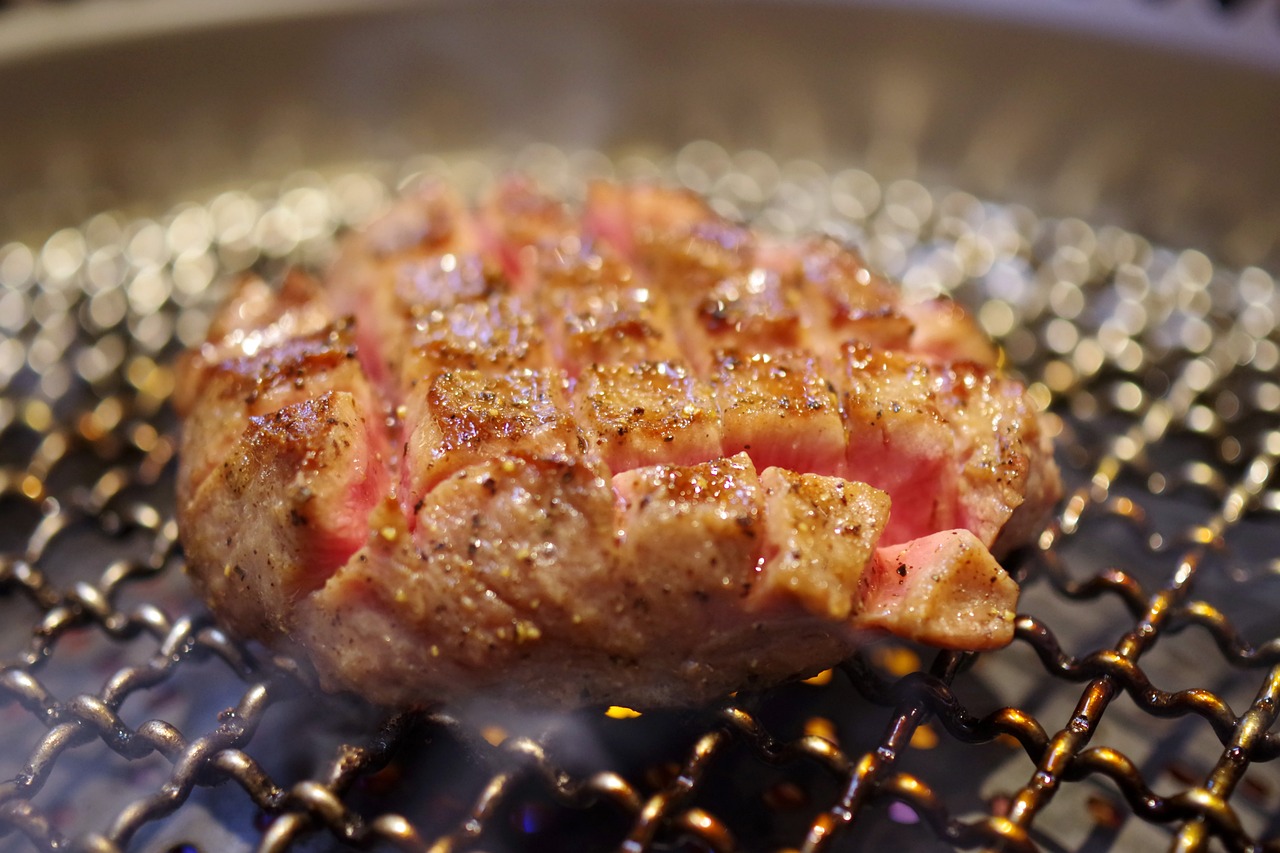
Flavor Development
The magic of cooking meat lies in the intricate dance of chemistry that occurs as it heats up. One of the most fascinating aspects of this process is the Maillard reaction, a complex series of chemical reactions that not only changes the color of the meat but also enhances its flavor profile dramatically. When meat is subjected to heat, amino acids and reducing sugars begin to react, creating a myriad of new flavor compounds that tantalize our taste buds. This is why a seared steak tastes so much better than a boiled one; the high temperatures involved in grilling or pan-searing initiate this reaction, giving rise to that delicious, savory crust that we all love.
As the meat cooks, various compounds are formed, contributing to a range of flavor notes from sweet to savory, and even umami. The development of these flavors can be influenced by several factors, including:
- Cooking Temperature: Higher temperatures accelerate the Maillard reaction, leading to richer flavors.
- Cooking Time: Longer cooking times can deepen flavors, but be careful not to overcook!
- Meat Type: Different types of meat have varying levels of sugars and amino acids, which can affect flavor development.
For those looking to elevate their culinary skills, understanding the specific flavor compounds generated by the Maillard reaction can be a game changer. For instance, when cooking beef, the formation of compounds like furan and pyrazines contributes to the meat's rich, roasted flavor. Meanwhile, cooking chicken can produce different compounds that yield a lighter, yet equally appealing flavor. It’s like a symphony of flavors, each instrument playing its part to create a harmonious dish!
Additionally, the charred bits that form on the surface of grilled meat are not just for show; they are packed with flavor! These caramelized bits provide a textural contrast and an explosion of taste that can elevate any dish. Think of it as adding a splash of color to a painting; those crispy edges are the brush strokes that bring your dish to life.
Moreover, the interplay of heat and moisture also plays a crucial role in flavor development. When cooking meat, moisture can help distribute heat evenly, ensuring that the meat cooks through without drying out. This is where techniques like braising or using a marinade come into play, allowing flavors to penetrate deeper into the meat while maintaining juiciness. The result? Tender, flavorful meat that practically melts in your mouth!
In summary, the flavor development in cooking meat is a complex yet fascinating process influenced by heat, time, and the type of meat being cooked. By understanding and manipulating these factors, you can create mouthwatering dishes that are bursting with flavor, making every meal a delightful experience.
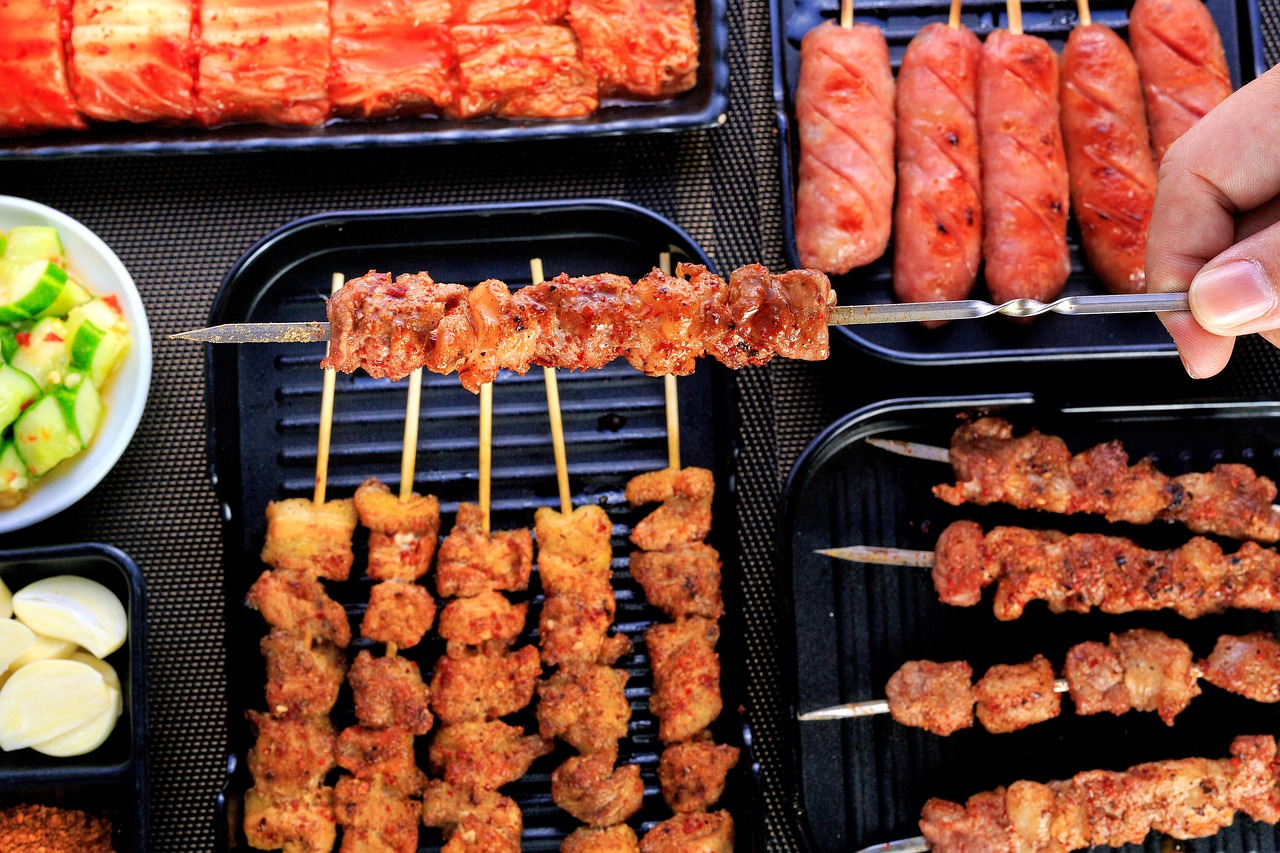
Color Changes in Meat
The journey of meat from raw to cooked is not just a sensory delight but a fascinating display of chemical transformations. As meat cooks, it undergoes various color changes that can indicate doneness and enhance its visual appeal. Initially, raw meat is often a vibrant red or pink due to the presence of myoglobin, a protein that stores oxygen in muscle cells. This color is a hallmark of freshness, but as heat is applied, a captivating metamorphosis begins.
When meat is exposed to heat, the myoglobin denatures and transforms into metmyoglobin, resulting in a brownish hue. This change is not merely aesthetic; it signifies that the meat is cooking through the process of protein coagulation. The degree of this color change can serve as a rough indicator of doneness, but it's essential to remember that color alone can be misleading. For example, a steak may appear brown on the outside while still being rare on the inside, highlighting the importance of using a meat thermometer for accurate cooking.
Interestingly, the Maillard reaction plays a crucial role in the browning of meat, contributing to those delightful caramelized flavors we all love. This reaction occurs when amino acids and reducing sugars react under heat, resulting in a complex array of flavors and colors. The rich, golden-brown crust that forms on grilled or roasted meat is a testament to this reaction, enhancing both visual appeal and taste.
Moreover, the type of meat and its fat content can significantly influence color changes during cooking. For instance, poultry tends to turn from pink to a golden brown, while pork transitions from pink to white as it cooks. Here’s a quick overview of the typical color changes in various meats:
| Type of Meat | Raw Color | Cooked Color |
|---|---|---|
| Beef | Red/Pink | Brown |
| Pork | Pink | White |
| Poultry | Pink | Golden Brown |
In addition, the cooking method can also affect the final color of the meat. For example, grilling often produces a darker, more charred exterior compared to roasting, which may yield a lighter, more uniform color. This variation can be attributed to the different heat applications and the duration of cooking. Thus, understanding these color changes not only enhances our cooking skills but also deepens our appreciation for the art and science behind preparing meat.
In conclusion, the color changes in meat during cooking are a visual representation of the intricate chemical processes at play. They serve as important indicators of doneness and flavor development, reminding us that cooking is as much about science as it is about art.
- Why does meat change color when cooked? - The color change is due to the denaturation of myoglobin and the Maillard reaction, which occurs during cooking.
- Is color a reliable indicator of doneness? - While color can provide clues, it is not always reliable. Using a meat thermometer is the best way to ensure meat is cooked to a safe temperature.
- How does cooking method affect meat color? - Different cooking methods apply heat differently, leading to variations in color. Grilling produces a darker crust, while roasting often results in a lighter appearance.
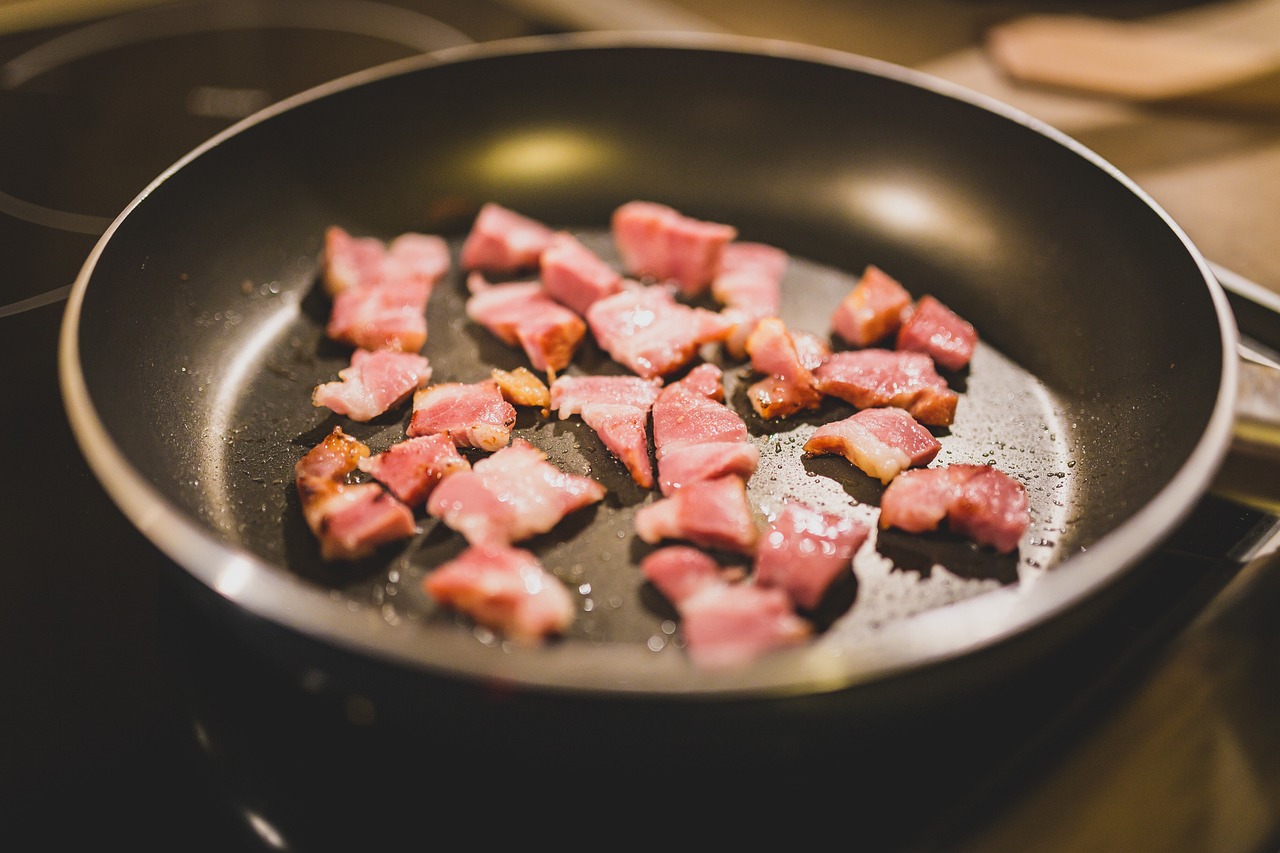
Impact of Marinades and Seasonings
When it comes to cooking meat, the impact of marinades and seasonings cannot be overstated. These flavorful additions not only enhance the taste but also play a crucial role in the chemistry of cooking. Marinades, which are typically composed of acids, oils, and various flavorings, can penetrate the meat, leading to significant changes in both texture and flavor. This transformation is primarily due to the interaction between the marinade components and the meat's proteins, which can lead to the breakdown of tough fibers.
One of the key benefits of using marinades is their ability to tenderize meat. This process occurs because the acidic components, such as vinegar, citrus juice, or yogurt, work to break down protein structures in the meat. As a result, the meat becomes more tender, making it easier to chew and more enjoyable to eat. For instance, a marinade made with lemon juice not only imparts a zesty flavor but also helps to soften the meat, making it perfect for grilling or roasting.
In addition to tenderness, marinades and seasonings contribute to moisture retention. When meat is marinated, it absorbs some of the liquid, which helps keep it juicy during cooking. This is especially important for lean cuts of meat that are prone to drying out. The combination of oil in the marinade also creates a barrier that locks in moisture, ensuring that the meat remains succulent and flavorful. Here’s a quick overview of how different components in marinades affect meat:
| Component | Effect on Meat |
|---|---|
| Acids (e.g., vinegar, citrus) | Tenderizes by breaking down proteins |
| Oils | Locks in moisture and adds richness |
| Herbs and Spices | Adds flavor complexity and aroma |
Moreover, the way marinades are applied can significantly influence the final flavor profile of the meat. For instance, a quick marinade for just 30 minutes can impart a mild flavor, while a longer soak of several hours or overnight can allow for a deeper infusion of flavors. Techniques such as brining—which involves soaking meat in a saltwater solution—can also enhance moisture retention and flavor, making it a popular choice for poultry and pork.
It's also worth noting that the timing of marination can be crucial. While some meats benefit from a long marination period, others may become mushy if left too long due to the breakdown of proteins. Therefore, understanding the type of meat and the desired outcome is essential for achieving the perfect balance of flavor and texture.
In summary, marinades and seasonings are not just about adding flavor; they are integral to the cooking process that affects the meat's texture, moisture, and overall enjoyment. By experimenting with different ingredients and techniques, you can elevate your dishes to new heights, making every meal a delightful experience.
- What is the best way to marinate meat? The best way to marinate meat is to use a mix of acidic ingredients, oils, and seasonings, allowing it to soak for the appropriate time based on the type of meat.
- How long should I marinate meat? Generally, you should marinate meat for at least 30 minutes, but tougher cuts can benefit from several hours or even overnight.
- Can I reuse marinade? It's not recommended to reuse marinade that has been in contact with raw meat unless it has been boiled first to kill any bacteria.
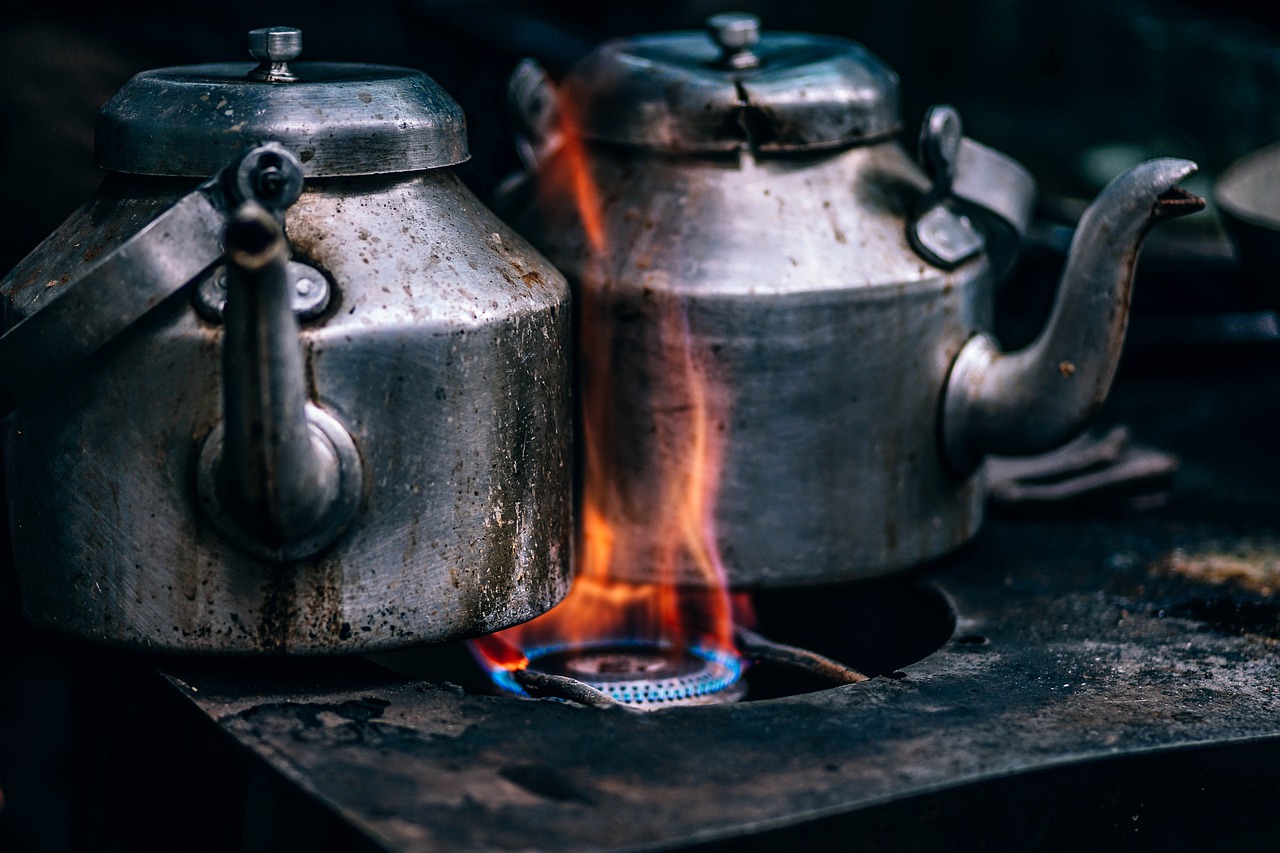
Acidity and Tenderization
When it comes to cooking meat, acidity plays a pivotal role in enhancing tenderness and flavor. You might be wondering how something as simple as an acidic marinade can make a tough cut of meat melt in your mouth. Well, let’s dive into the science behind it!
Acidic ingredients such as vinegar, citrus juices, and yogurt work by breaking down the protein structures in meat. This process is known as denaturation, where the proteins unravel and lose their original structure. As a result, the meat becomes more tender, allowing for a better eating experience. Think of it like a gentle massage for your meat, relaxing those tight fibers and making them more palatable.
Moreover, the effectiveness of acid in tenderizing meat can vary depending on the type of acid used. Here’s a quick overview of some common acidic ingredients and their tenderizing effects:
| Acidic Ingredient | Tenderizing Effect |
|---|---|
| Vinegar | Breaks down collagen, making tougher cuts softer |
| Citrus Juices (Lemon, Lime) | Enhances flavor while tenderizing |
| Yogurt | Contains enzymes that effectively tenderize meat |
| Wine | Adds flavor and helps in protein breakdown |
While using acidic marinades can significantly improve texture, timing is crucial. If you marinate meat for too long, the acids can actually make it mushy. Generally, a good rule of thumb is:
- For chicken and fish: 30 minutes to 2 hours
- For pork: 2 to 6 hours
- For beef: 6 hours to overnight
So, the next time you’re whipping up a delicious meal, remember that adding a splash of acid can not only enhance the flavor but also transform the texture of your meat. It’s a simple yet effective trick that can elevate your cooking game!
Q: Can I use any type of acid to marinate meat?
A: Yes, you can use various types of acids like vinegar, citrus juices, or yogurt. Each will impart different flavors and tenderness to the meat.
Q: How long should I marinate meat with acidic ingredients?
A: The marinating time varies by meat type. Chicken and fish generally need 30 minutes to 2 hours, while tougher cuts of beef can be marinated overnight.
Q: Will marinating in acid make the meat too soft?
A: If marinated for too long, yes, it can become mushy. It’s important to find the right balance based on the type of meat and the acid used.
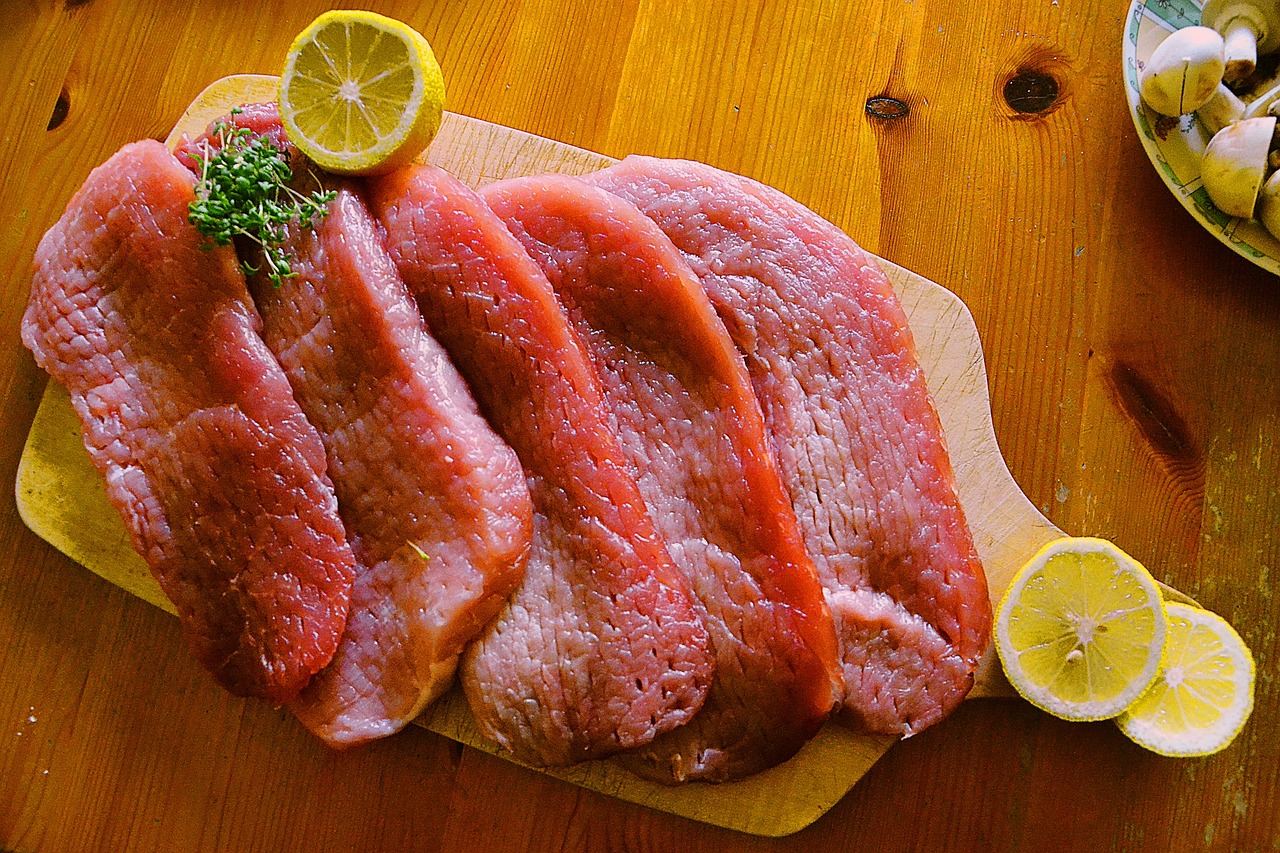
Flavor Infusion Techniques
When it comes to cooking meat, infusing flavor is an art that can take your culinary skills to the next level. Imagine biting into a perfectly seasoned steak that bursts with flavor; that’s the magic of effective flavor infusion. There are several techniques to achieve this, and understanding them can transform your dishes from ordinary to extraordinary.
One of the most popular methods is marinating. This involves soaking the meat in a mixture of acidic ingredients, oils, and various seasonings for a period of time before cooking. The acidic component, such as vinegar or citrus juice, helps to break down the protein structure, allowing flavors to penetrate deeper into the meat. Typically, a marinating time of 30 minutes to 24 hours is recommended, depending on the type and cut of meat. For instance, tougher cuts like flank steak benefit from longer marination, while more delicate meats like chicken breast may only need a short soak.
Another effective technique is dry brining, which involves rubbing salt onto the surface of the meat and allowing it to rest. This process draws moisture out initially, but then the meat reabsorbs the juices, creating a more flavorful and juicy end product. The key here is to use the right amount of salt—about 1 teaspoon per pound of meat works well. After salting, let the meat sit for at least an hour, or even overnight in the fridge for maximum flavor.
Injecting marinades is a more advanced technique that can deliver intense flavor directly into the meat. Using a flavor injector, you can introduce liquid marinades deep into the muscle fibers, ensuring every bite is packed with taste. This method is particularly effective for larger cuts of meat, such as pork shoulders or turkeys, where surface marination may not suffice. Just remember to balance the flavors and not overdo it; a little goes a long way!
Moreover, the timing of when you apply your flavoring agents can also make a significant difference. For example, applying spices and herbs at the beginning of the cooking process allows their flavors to meld into the meat, while adding them towards the end can enhance their brightness and freshness. It's like adding a splash of lemon juice to a dish just before serving—it lifts the flavors and makes them pop!
Lastly, consider the use of aromatics during cooking. Ingredients like garlic, onions, and herbs can be added to the cooking medium (think oil or broth) to create a rich base that flavors the meat as it cooks. This technique is especially effective in slow cooking, where the flavors have time to develop and permeate the meat.
In summary, mastering flavor infusion techniques can elevate your meat dishes to new heights. Whether you choose to marinate, dry brine, inject, or use aromatics, each method offers a unique way to enhance the taste and tenderness of your meat. So, the next time you're in the kitchen, remember these techniques and watch as your meals transform into flavorful masterpieces!
- How long should I marinate meat? - Typically, marinating for 30 minutes to 24 hours is ideal, depending on the cut of meat.
- Can I dry brine meat overnight? - Yes! Dry brining overnight can enhance flavor and tenderness.
- What is the best way to inject marinades? - Use a flavor injector to introduce the marinade deep into the meat, focusing on thicker cuts.
- Should I add spices at the beginning or end of cooking? - It depends! Add them early for depth and late for brightness.
Frequently Asked Questions
- What is the main composition of meat?
Meat primarily consists of proteins, fats, and water. The protein content is crucial for texture and flavor, while fats contribute to juiciness and richness. Understanding this composition helps in predicting how meat will react to different cooking methods.
- How does heat affect the cooking of meat?
Heat plays a vital role in transforming meat's texture and flavor. Different cooking methods, like grilling or roasting, apply heat in unique ways, which can significantly alter the final taste and tenderness of the meat. The method you choose can make all the difference!
- What is the Maillard reaction?
The Maillard reaction is a complex chemical reaction that occurs when meat is cooked, leading to browning and the development of rich flavors. This reaction is essential for creating that delicious crust on grilled steaks or roasted meats, enhancing the overall taste experience.
- How can marinades enhance the cooking process?
Marinades can significantly impact the flavor, tenderness, and moisture of meat. Acidic ingredients in marinades help to break down proteins, making the meat more tender. Additionally, the right blend of spices and herbs can infuse the meat with exciting flavors.
- What is the importance of temperature control in cooking meat?
Temperature control is crucial for achieving the desired doneness and ensuring food safety. Cooking meat to the right internal temperature not only enhances its texture but also reduces the risk of foodborne illnesses. A meat thermometer is your best friend here!
- Why do different cooking methods yield different flavors?
Each cooking method utilizes a unique way of transferring heat—whether through conduction, convection, or radiation—which can lead to distinct flavor profiles. For instance, grilling imparts a smoky flavor while roasting can caramelize the meat's surface, creating a different taste experience.
- How does slow cooking benefit meat?
Slow cooking allows for gradual heat application, which enhances tenderness and flavor through prolonged breakdown of collagen. This method retains moisture and results in incredibly flavorful and juicy meat, making it a favorite for many home cooks!
- What color changes should I look for in cooked meat?
The color of cooked meat can indicate its doneness. For example, beef should be a rich brown color when medium-rare, while chicken should be white or light brown. These color changes are not just aesthetic; they also signal important chemical transformations that affect taste and safety.














